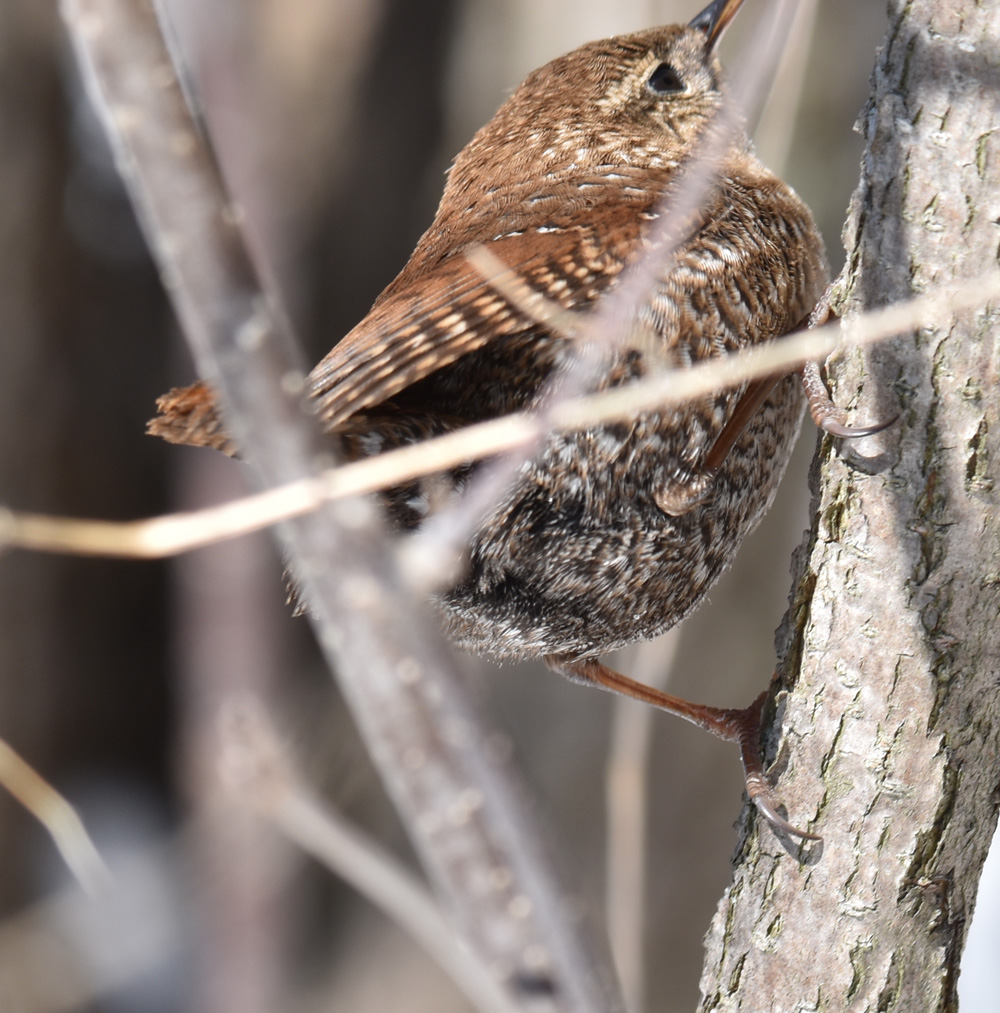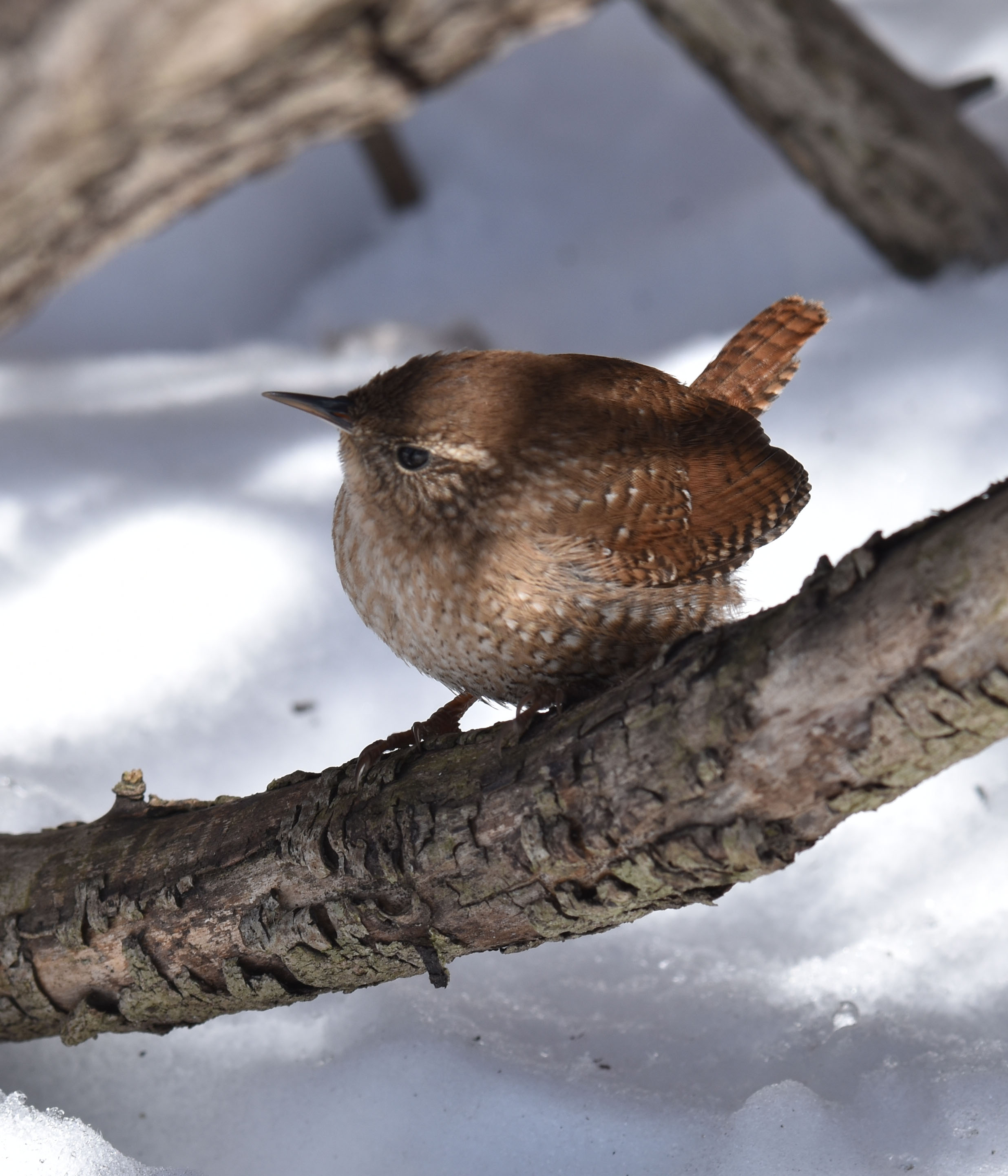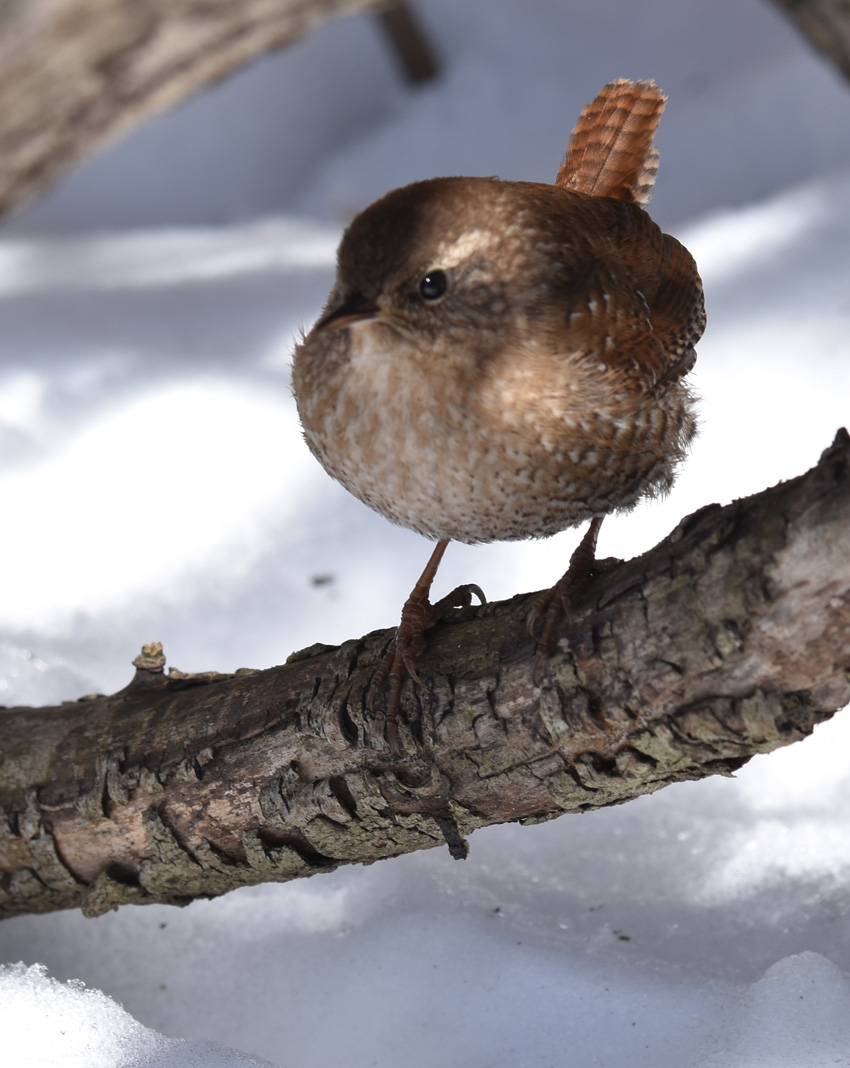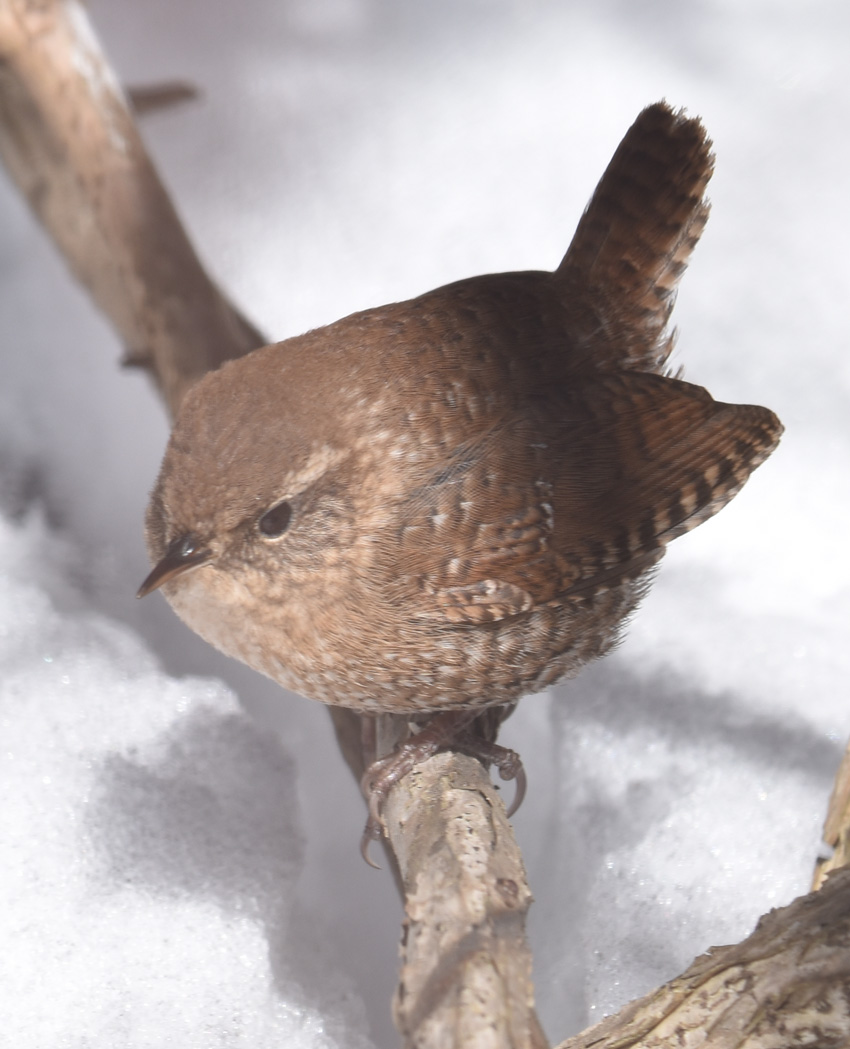In early April migration hasn’t really commenced. That meant I had time to go to Colonel Sam Smith Park in Toronto to admire the male Harlequin Duck one more time before he was likely to disappear for his summer quarters. I enjoyed watching him but I was even more pleased to get to watch a Winter Wren that had either over-wintered or arrived back early ready to greet the spring.
How Does a Winter Wren Feed When There’s Snow on the Ground?
I can’t speak for every wren, but this particular Winter Wren was searching the lower bark of every twig on every shrub, sapling and tree along the edge of the marina lagoon.
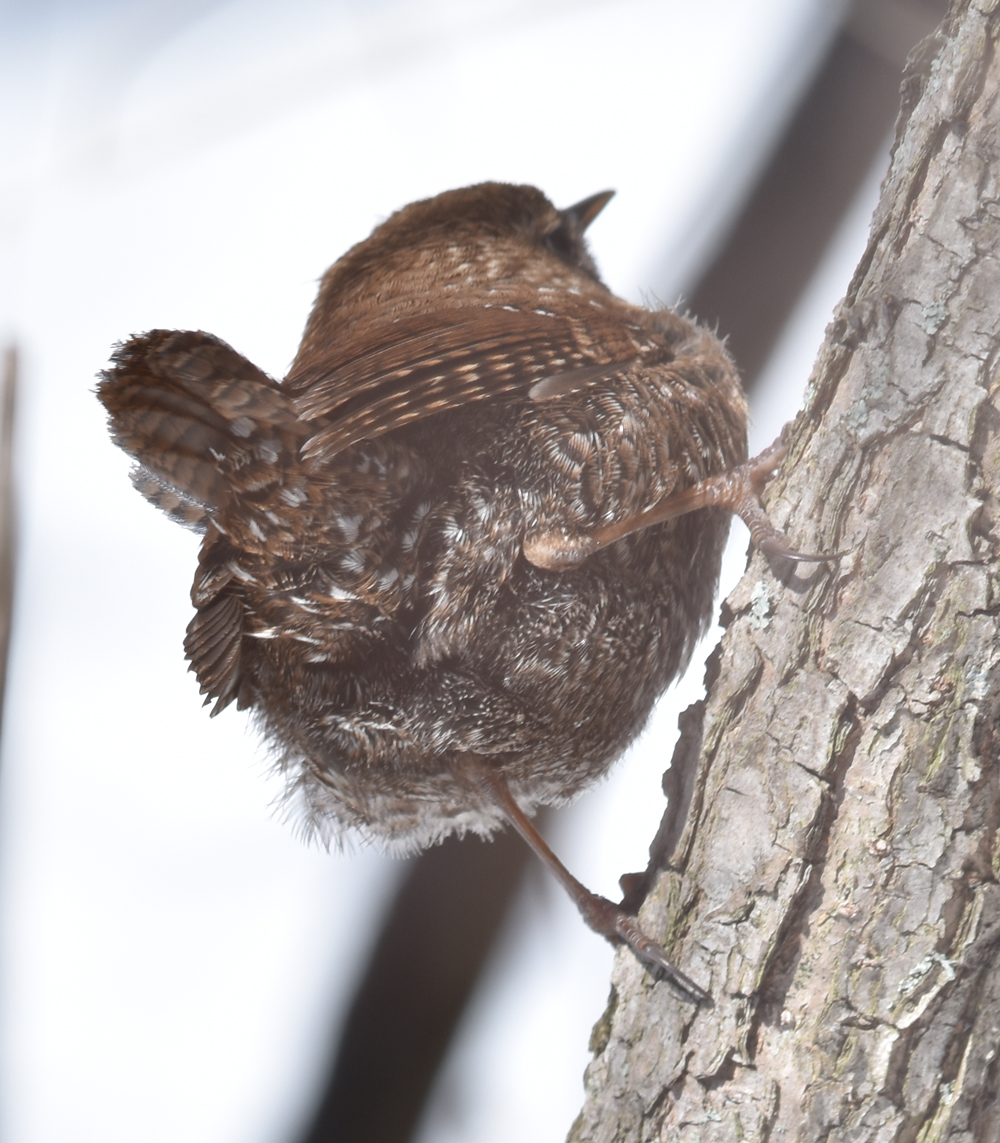
Most birds prefer to turn their backs on me.
This spot was sheltered and warmed by the sun. Presumably that helped the Wren cope with the cold temperatures but it may also have been warming up some insects. If so, and they stirred, it would make them easier for this hungry hunter to find them. I did see a few midges so it’s possible the wren was also gleaning them from their perches in the sunshine.
The Winter Wren I watched at Lasalle Marina in Burlington had used a different strategy: That bird had been checking every bit of exposed ground under the large boulders along the path and at the bases of the larger trees. The area it was working through also faced the sunshine, though, so it had that in common.
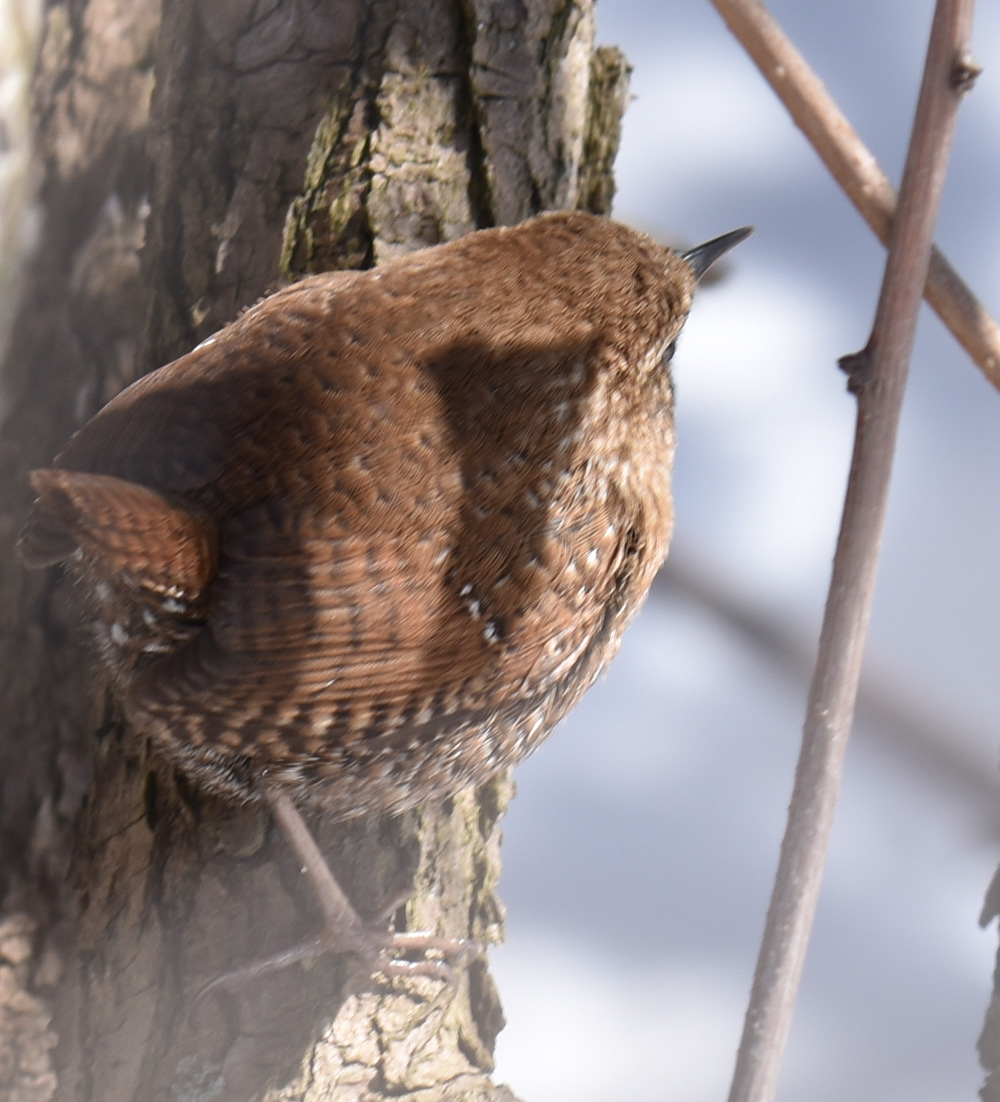
Winter Wrens have very small tails and when puffed up look almost round.
I spent over half an hour watching the Winter Wren at Sam Smith.
As an unexpected bonus, I also found an early (or very late) Ruby-crowned Kinglet and several amusing American Tree Sparrows. One good bird often leads to another!
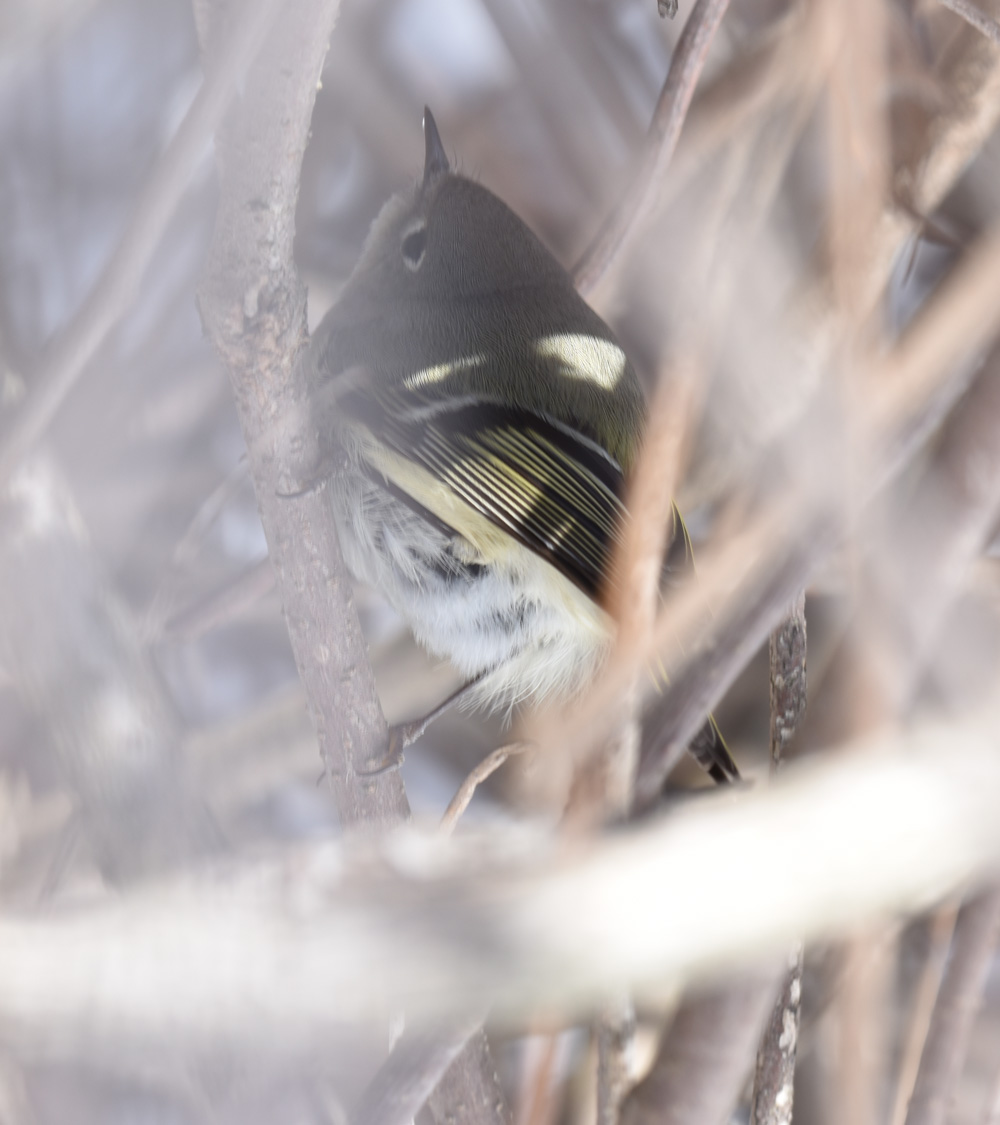 This Ruby-crowned Kinglet didn’t seem to mind exploring tight spaces as it hunted for insects.
This Ruby-crowned Kinglet didn’t seem to mind exploring tight spaces as it hunted for insects.
Related Reading
Join In
Do you find these golfball-sized puffs of feathers fun to watch? Please share your views with a comment.

